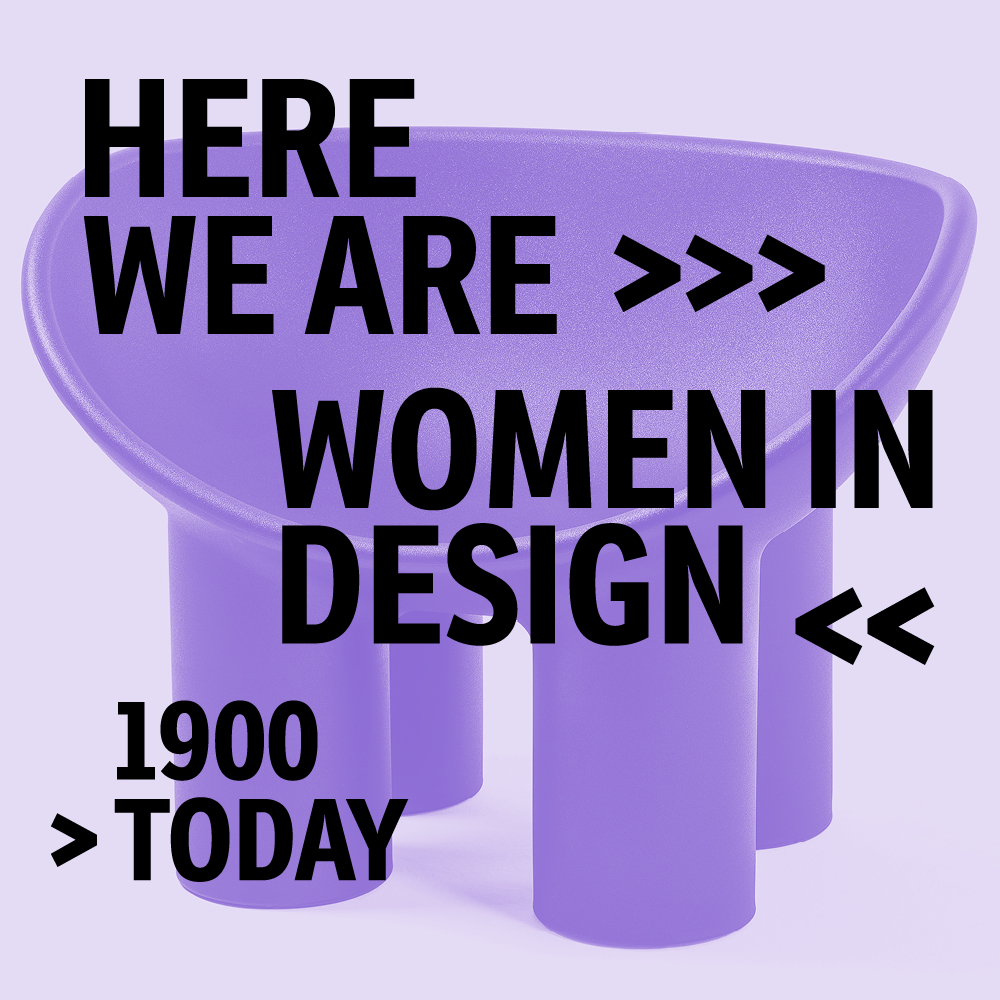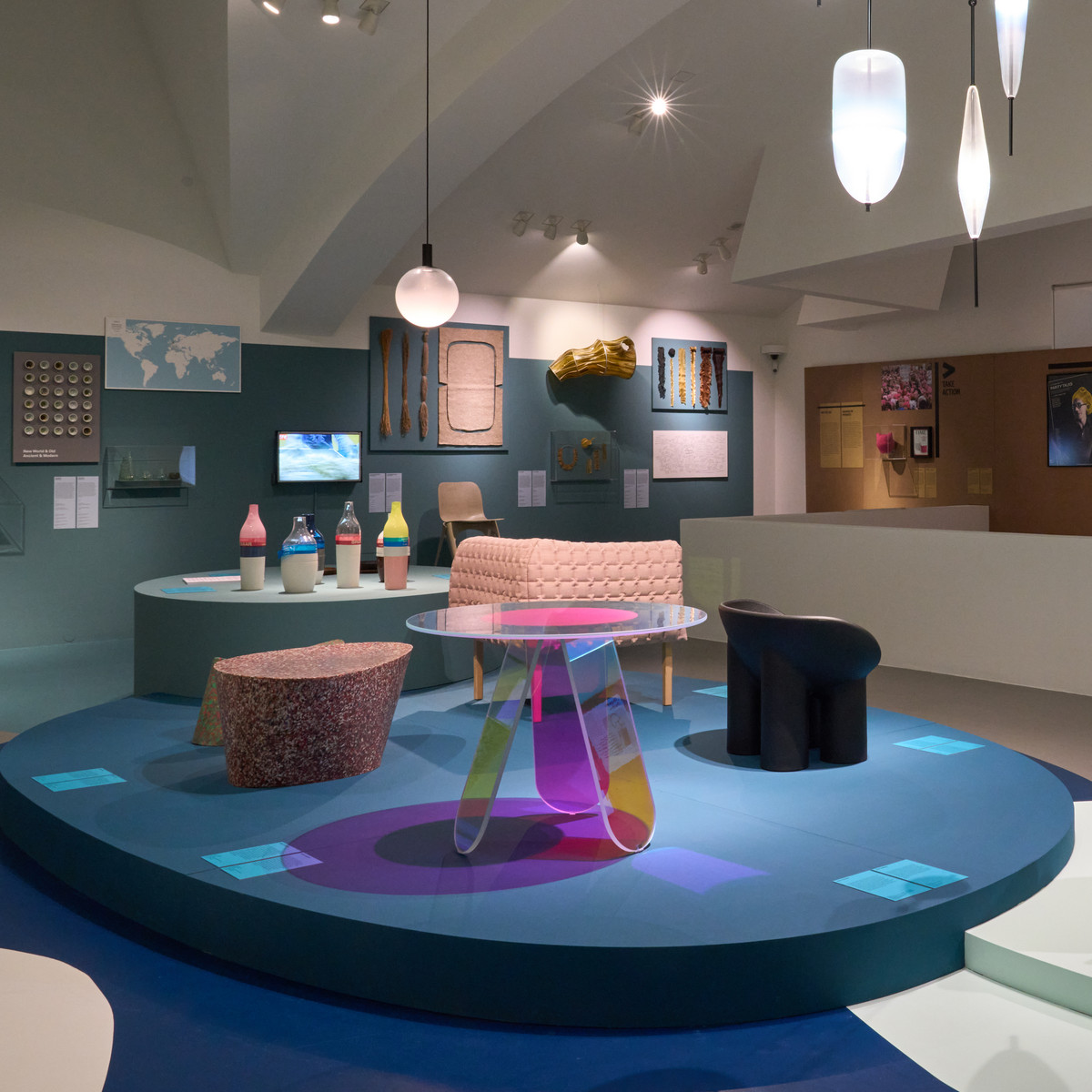Here We Are!
Women in Design 1900 – Today
Women in Design 1900 – Today
23.09.2021 – 06.03.2022
Vitra Design Museum
Exhibition programme
More information
Be it in furniture design, fashion design, industrial design, or interior design, women have contributed crucially to the development of modern design, both creatively and commercially. And yet books about the history of design often fail to mention them. The exhibition »Here We Are! Women in Design 1900 – Today« at the Vitra Design Museum seeks to help redress the balance. Presenting women designers from the past 120 years, it tells a new, many-voiced story of design against the background of the struggle for equal rights and recognition. Around eighty women in design are showcased in the exhibition, including protagonists of modernism like Eileen Gray, Charlotte Perriand, Lilly Reich, and Clara Porset, business leaders like Florence Knoll and Armi Ratia, but also lesser-known figures like the social reformer Jane Addams. Contemporary positions and future outlooks are represented by such designers as Matali Crasset, Patricia Urquiola, Julia Lohmann, as well as the collectives Matri-Archi(tecture) and Futuress.
In the present day, nearly half the design students are women, and women lead the way in many pathbreaking areas of design. With its rich display of fascinating exhibits, »Here We Are! Women in Design 1900 – Today« traces the work and working conditions of women in design from early modernism to the present – from iconic objects created by Eileen Gray to little-known new discoveries, contemporary activist networks, and feminist design research. It defines a clear stance on a key social issue and presents modern design in a new light.
The exhibition consists of four parts and takes visitors on a journey through the past 120 years of design history. The first part focusses on the development of design in Europe and the United States in around 1900, when design emerged as a profession in its own right. This was a time of intensifying struggle for female suffrage, too, and the bid for emancipation is reflected in the design produced, for example, by such social reformers as Jane Addams and Louise Brigham, whose works would today be described as »Social Design«.
The exhibition’s second part concentrates on the 1920s to 1950s, an era during which women designers like Charlotte Perriand, Eileen Gray, and Clara Porset, as well as Cartier’s creative director Jeanne Toussaint began to make their name internationally even though patriarchal patterns endured. The third part of the exhibition addresses the period from 1950 to the end of the 1980s. A second wave of feminism emerged in the 1960s to oppose the conservative post-war mentality evident, for example, in the Swiss Exhibition on Women’s Work held in 1958. Women’s work was still defined as domestic work, the home as women’s proper sphere, but despite this limited view of their activities, many women were extraordinarily creative and productive.
The exhibition’s fourth part brings us to the present day. Works by established international designers including Matali Crasset, Patricia Urquiola, or Hella Jongerius prove that today, a successful career in design is equally possible for both men and women. Some women designers have been pushing the boundaries of their discipline and make crucial contributions towards redefining the meaning of design as such. These include Julia Lohmann, as well as Christien Meindertsma. This part of the exhibition also introduces a number of recent initiatives demonstrating how feminist discourse questions patterns of authorship, education, and recognition in design and architecture in the light of such concepts as diversity and intersectionality.
In offering a broad survey of different positions, the exhibition »Here We Are! Women in Design 1900 – Today« is as multifaceted as developments and ongoing debates on feminism in our society. It thus provides a fresh, updated look at the story of modern design and gives plenty of thought-provoking impulses about what design should be in the twenty-first century, who defines it, and who it is for.
#VDMWomenInDesign
#VitraDesignMuseum
The exhibition is supported by Cartier and funded by the Cultural Foundation of the German Federal States.


